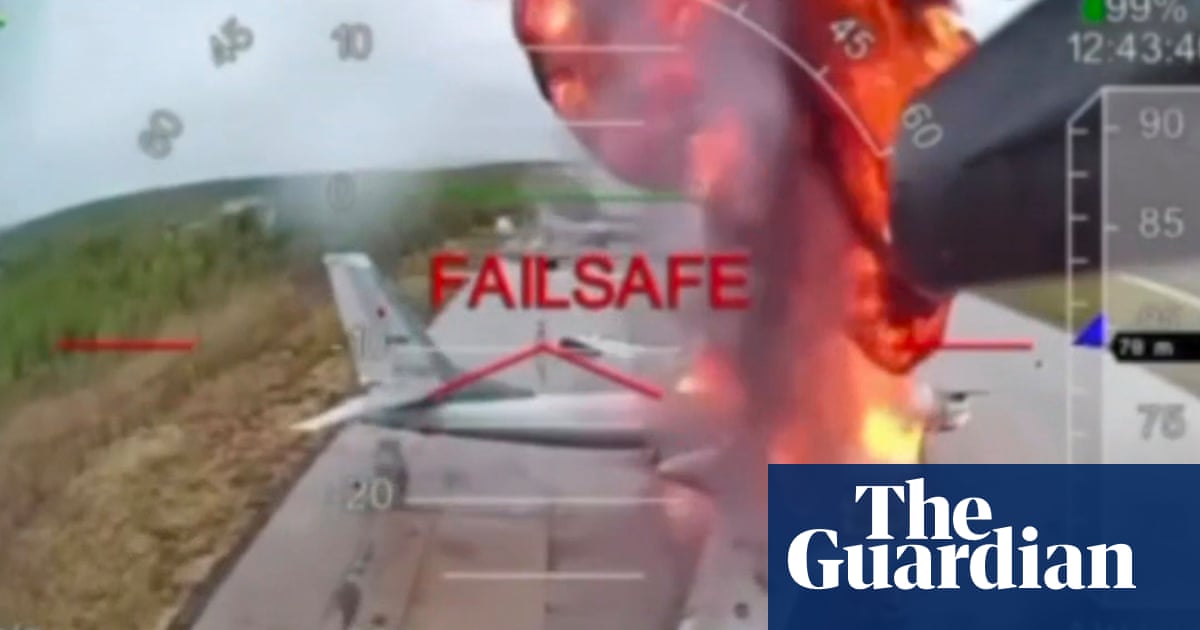AUkrainian drone attack has destroyed billions of dollars worth of Russian aircraft stationed at bases across the country, including at locations as far away as Siberia, in what Kyiv claims is its longest-range assault of the war.
The spectacularoperation, known as Spiderweb, was prepared in secret over 18 months. Ukraine’s agents moved short-range drones and explosives inside Russia before they were launched remotely for a coordinated strike on Sunday that was intended to strike at Moscow’s air superiority.
Vasyl Maliuk, the head of the Security Service ofUkraine(SBU), said drones were smuggled into Russia and placed inside containers, which were later loaded on to trucks.
With the trucks positioned near Russian bases, the roof panels of the containers were lifted off by a remotely activated mechanism, allowing the drones to fly out and begin their attack. The drones had first-person view, or FPV, technology that allowed them to be operated remotely, probably from Ukrainian territory.
Attempting to launch drones from Ukraine would have been much harder, as they would have had to cover huge distances and avoid Russia’s air defences.
A photograph from Ukrainian security officials showed the containers, which were disguised as wooden sheds. Another image showed the containers with their retractable roofs removed and dozens of small quadcopter drones hidden inside among the beams.
Social media footage shared by Russian media appeared to show the drones rising from containers.
Ukraine’s SBU said the strikes damaged 41 planes used against Ukraine, though the full extent of the damage remained unclear.
Among those it claimed to have hit were A-50 surveillance planes, the supersonic Tu-160 and Tu-22 bombers, and the massive Tu-95s, which were developed to carry nuclear bombs and now launch cruise missiles.
The SBU said it had hit planes worth a combined $7bn (£5.2bn) at four airbases in the wave of drone strikes.
It said the attack struck Belaya airbase in Irkutsk, which is more than 2,500 miles (4,000km) from Ukraine. Other targets included the Olenya airbase in Murmansk, Dyagilevo airbase in Ryazan and Ivanovo Severny airbase in Ivanovo.
The Russian defence ministry confirmed that several of its military aircraft “caught fire” in the attack in the regions of Murmansk and Irkutsk. It added that there were no casualties and that several “participants” had been arrested.
Since the full-scale invasion began in February 2022, Ukraine has been outgunned by Russia but it has responded by developing a cheap and sizeable fleet of attack drones.
Ukraine’s president, Volodymyr Zelenskyy, said 117 drones were used in the operation, with a corresponding number of drone operators involved. He claimed 34% of “the strategic cruise missile carriers stationed at airbases were hit”.
“Our people operated across several Russian regions – in three different time zones. And the people who assisted us were withdrawn from Russian territory before the operation, they are now safe,” the president said, without disclosing whether the agents were Ukrainian or Russian.
